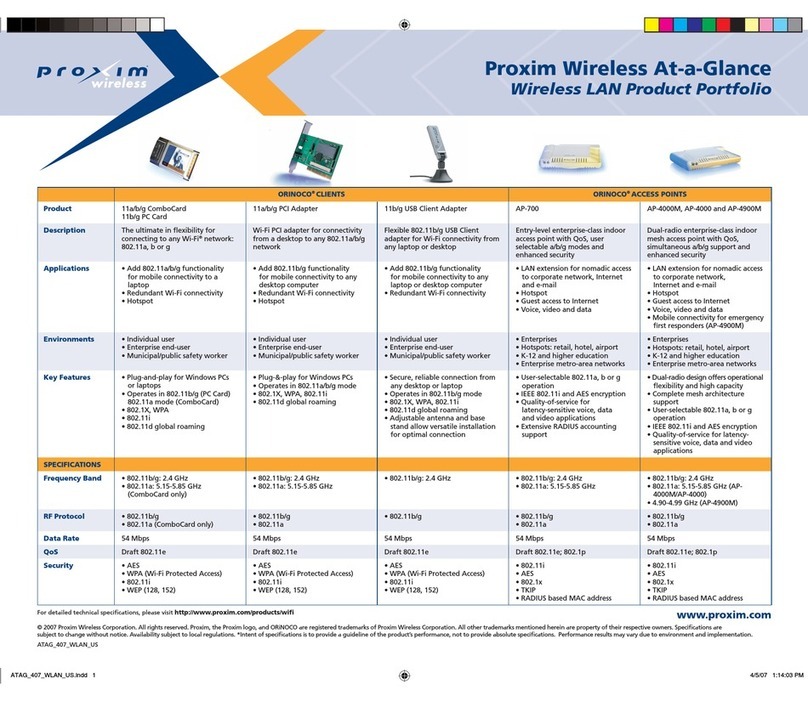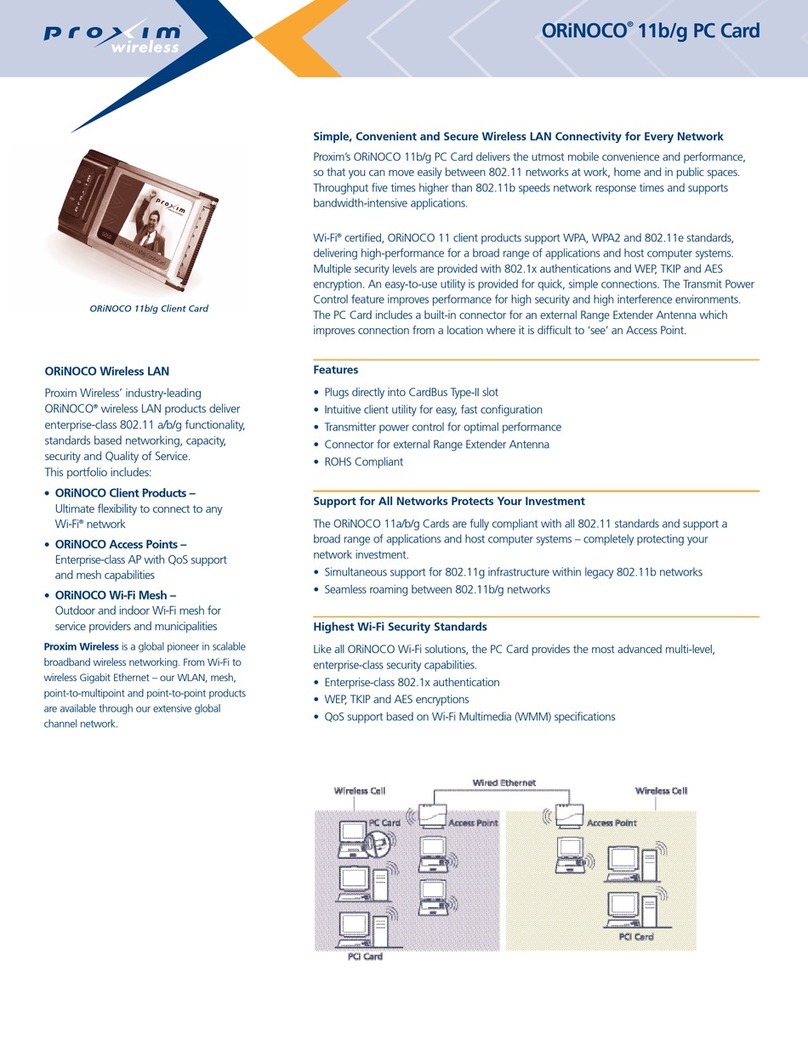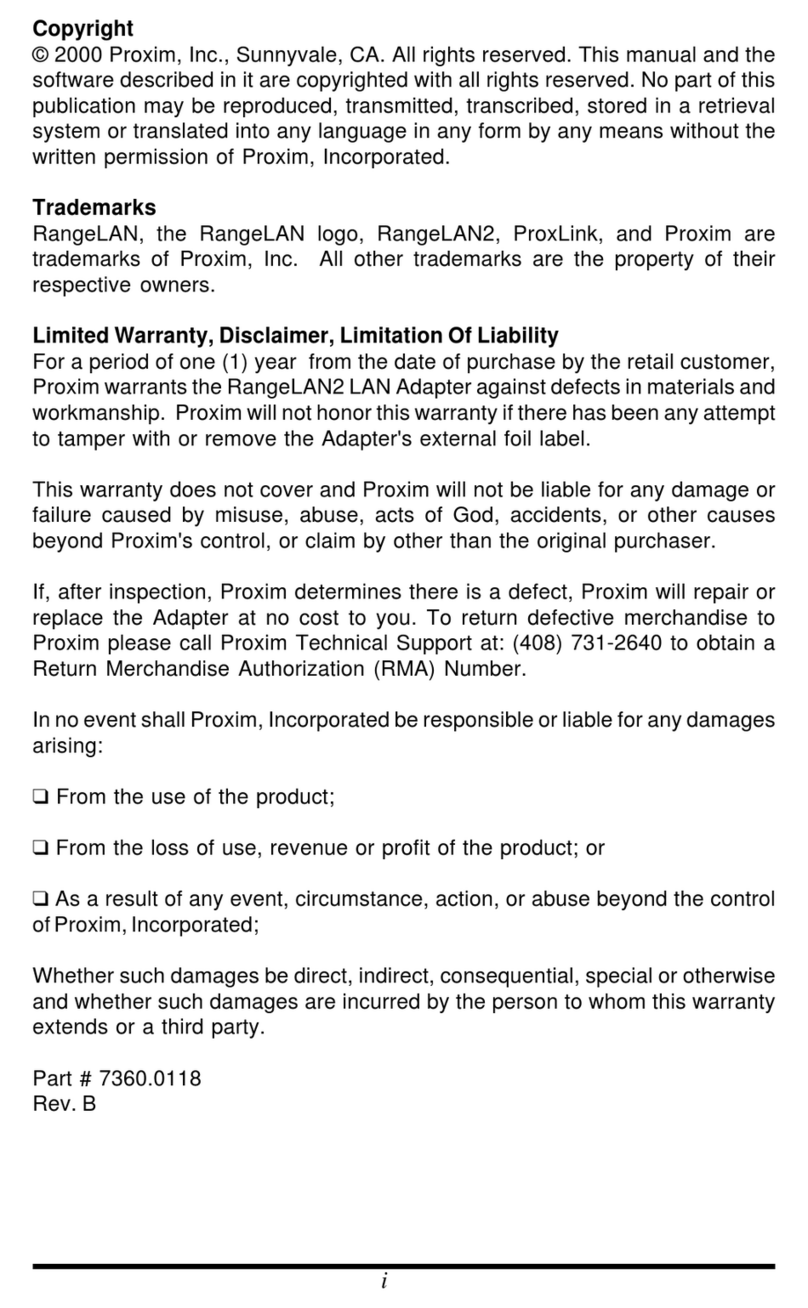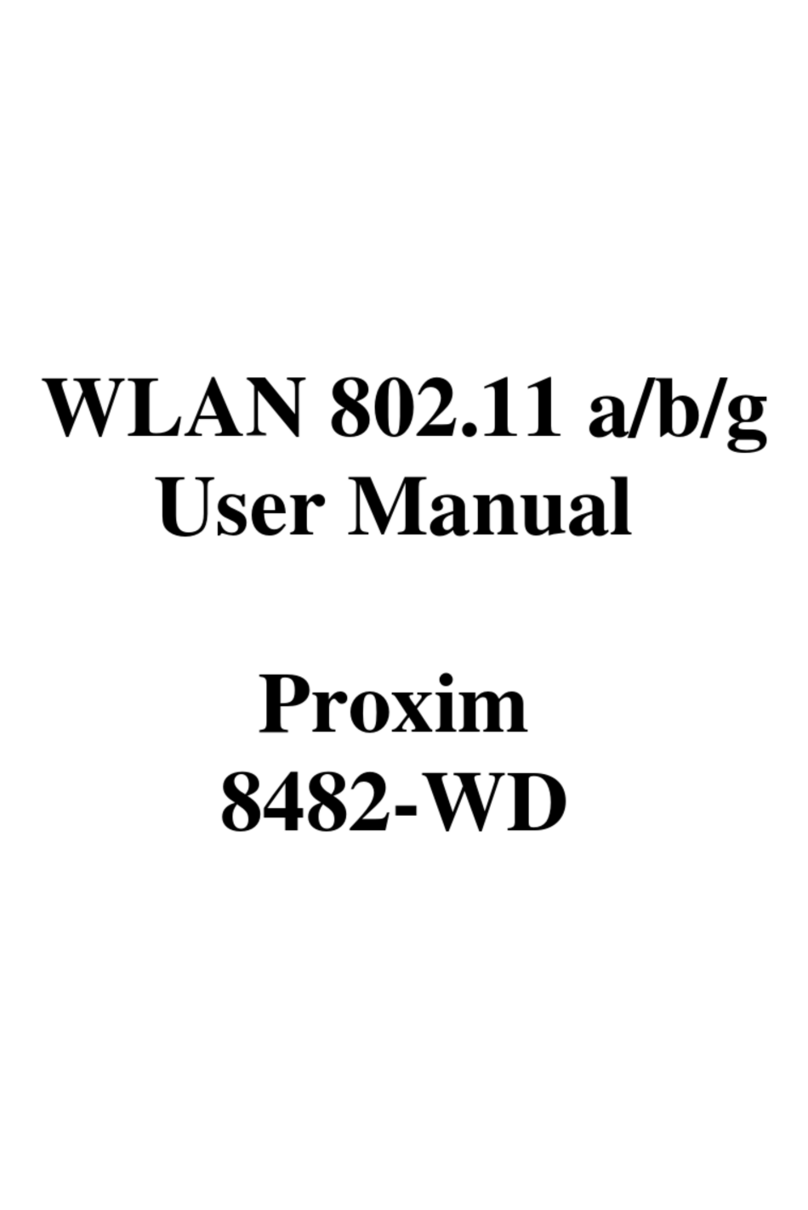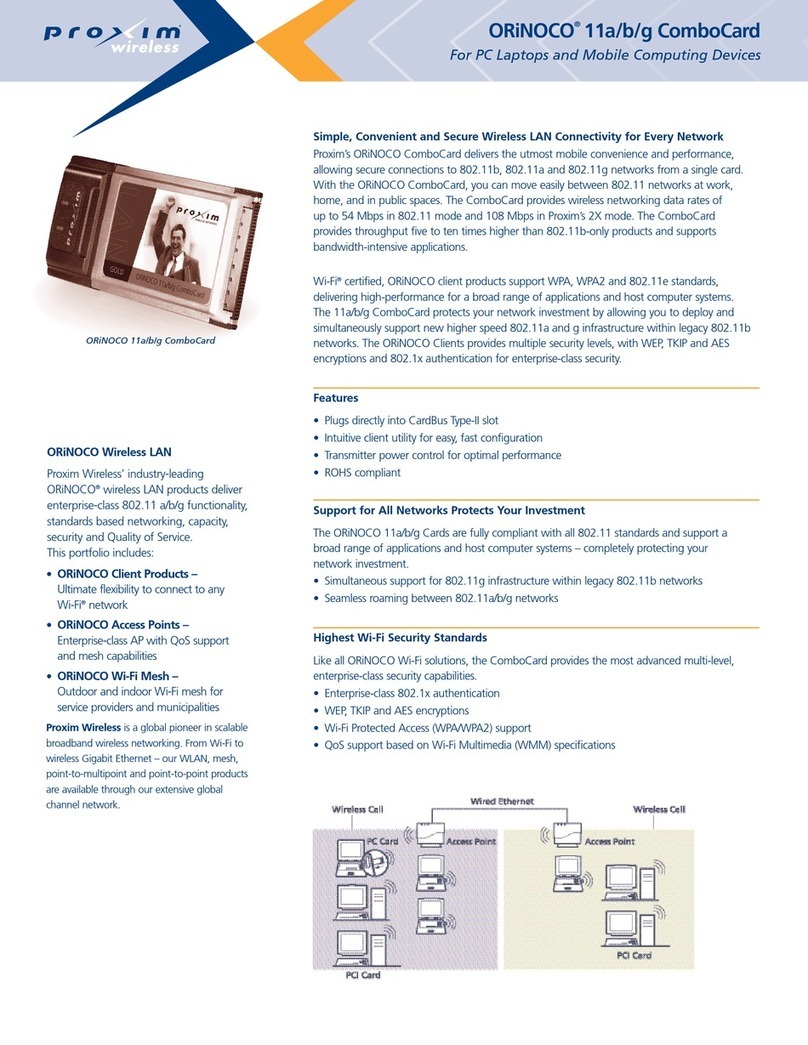
Chapter 1 About the PROXIM WLAN 802.11b/g device..........................................3
1-1 Introduction...........................................................................................................3
1-2 Using a Wireless Local Area Network..................................................................3
1-3 Features and Requirements...................................................................................4
Chapter 2 Network Configuring and Planning............................................................5
2-1 Ad-Hoc Network...................................................................................................5
2-2 Access Point (Infrastructure) Network .................................................................6
Chapter 3 Atheros Client Utility Installation...............................................................7
3-1 Atheros Client Utility Installation.........................................................................7
Chapter 4 Atheros Client Utility (ACU) Configuration............................................ 10
4-1 Atheros Client Utility icon.................................................................................. 10
4-2 Current Status Tab ...............................................................................................11
4-3 Profile Management............................................................................................ 13
4-3-1 Create or Modify a Profile....................................................................... 14
4-3-2 Security Settings in Profile Management................................................ 16
4-3-3 Advanced settings in Profile Management.............................................. 20
4-4 Diagnostic Tab.................................................................................................... 21
4-5Action Menu ....................................................................................................... 22
4-5-1 Enable/Disable Radio.............................................................................. 22
4-5-2 Enable/Disable Tray Icon........................................................................ 22
Chapter 5 Wireless Configuration using Windows XP..................................................... 23
5-1 Configuring Your Wireless Networking Settings ............................................... 23
5-2 Advanced Wireless Settings................................................................................ 23
5-3 Disabling the Radio ............................................................................................ 24
5-4 Help and Support Information............................................................................ 24
Appendix A -Atheros Client Utility Uninstall Process .................................................... 25
Appendix B -Glossary...................................................................................................... 28
Appendix C –Wireless Notice.......................................................................................... 29
Model Name: G11FNF






